When you press the power button on your computer and it appears to turn on, but you’re greeted with a blank screen, it can be quite frustrating. This issue occurs when the computer powers up correctly, with all the fans spinning and lights on, but the monitor remains blank or displays a “no display on boot” message.
This problem can arise due to various reasons. One common cause is a faulty connection between the computer and the monitor. Loose or improperly connected cables, such as the VGA, HDMI, DisplayPort, a corrupt BIOS, a malfunctioning graphics card, or an outdated display driver can also contribute to this problem.
In some cases, hardware issues like a defective monitor, a faulty power supply, or RAM problems can lead to the absence of a display.
Fortunately, there are multiple solutions to troubleshoot this “computer turns on but no display” problem. In this article, we have compiled the most effective & working solutions that can easily solve your problem. So, let’s take a look.
How To Fix A Computer That Is On But The Screen Is Black?
In case your PC is on but no display is showing, then try the below quick fixes to resolve your problem;
- Boot the computer into Safe Mode and see if the display works.
- Use a different monitor to see if the problem is with the monitor itself.
- Reinstall the graphics card drivers.
- Test your monitor.
- Reconnect Monitor to Computer.
- Check the Physical Connections.
- Verify that the power supply voltage switch is set correctly.
- Disconnect Peripherals.
If your computer turns on but the screen is still black on Windows 11/10, then try the below potential fixes;
1. Force Restart Computer
If you encounter a black screen after pressing the power button on your computer, you can try a simple troubleshooting step. Hold down the power button for approximately 10 seconds to force a shutdown.
Afterward, turn your PC back on. Repeat this process three times consecutively, and Windows Startup Repair should initiate automatically. This method may help resolve the black screen issue and allow your computer to start up normally.
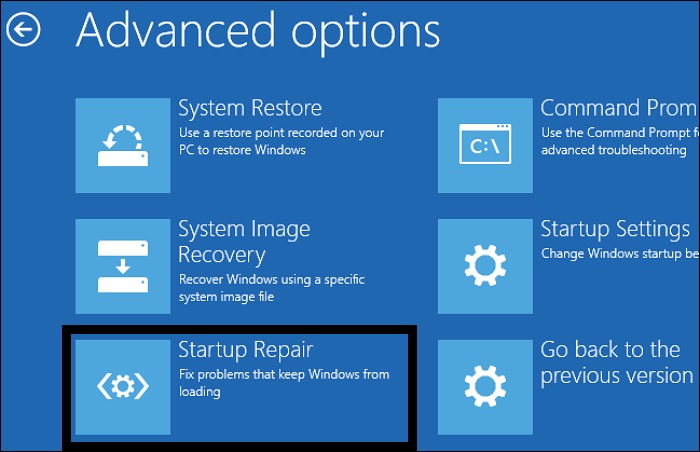
2. Power Cycle Your PC
Perform a power cycle by shutting down the computer, unplugging it from the power source, and then holding the power button for 15-20 seconds to discharge any residual power. Reconnect the power cable and turn on the computer. Moreover, you can reboot your PC using Ctrl + Alt + Del combination.
Troubleshoot the cause of the beep code if you’re lucky enough to get one. A beep code will give you a very good idea of exactly where to look for the cause of your computer turning off.
If your laptop turns on but there’s no display then try connecting the laptop to an external monitor. This will help you to determine if the problem is with the laptop’s display or with the computer itself.
3. Reset the BIOS Settings to Default
If your computer’s BIOS or UEFI settings have been improperly configured, it can cause the computer may boot with a black screen. You can reset your BIOS to default settings to determine whether it is the cause of your issue
Here’s how to go about it:
Step 1. Hold down the power button until your computer shuts down.
Step 2. Unplug the AC power cord from the power source, and open your PC case.
Step 3. Using a non-conductive screwdriver or your fingernail to remove the CMOS battery from your motherboard.
Step 4. Reinstall your CMOS battery after waiting about 5 minutes.
Step 5. Turn on your computer after connecting the AC power cord to the power supply to see if your issue still exists.
4. Reseat the Memory Modules
Reseating the memory modules i.e. RAM modules and graphics card can help to resolve your black screen issue whenever the computer turns on the issue on Windows 11. Carefully remove and reinsert these components, ensuring they are firmly seated in their slots.
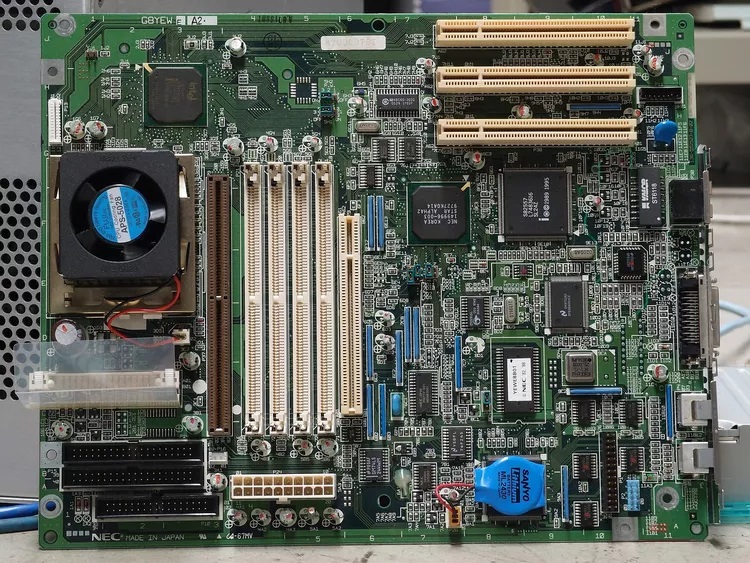
Try reseating the following components and then test if your computer displays something on screen:
- Reseat all internal data and power cables
- Reseat the memory modules
- Reseat any expansion cards
Ensure that all cables are properly connected to avoid potential issues. For instance, if the onboard video card has been deactivated, connecting a VGA cable to it will not display anything on the monitor, even if the computer is turned on. In such a scenario, it is important to connect the VGA cable to the appropriate video card.
5. Roll Back or Update the Display Adapter Driver
Booting a PC with a black display may occur due to an obsolete, impaired, or incompatible device driver. Resolving this issue involves either rolling back or updating the respective drivers. To complete this, you must initiate Safe Mode on your computer.
Step 1. Type Device Manager in your Windows search box and launch it.
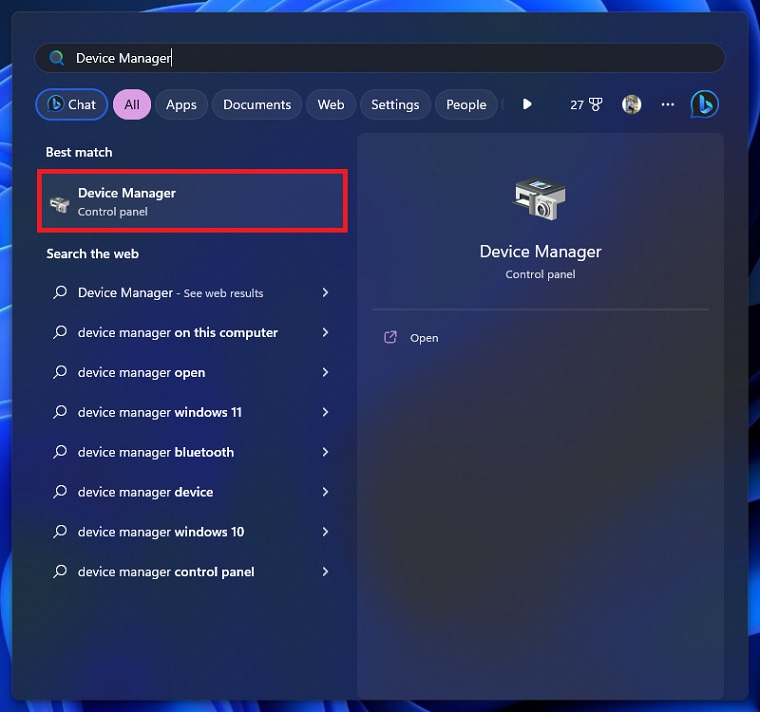
Step 2. Expand the Display adapter.
Step 3. Right-click on the device and select Update driver.
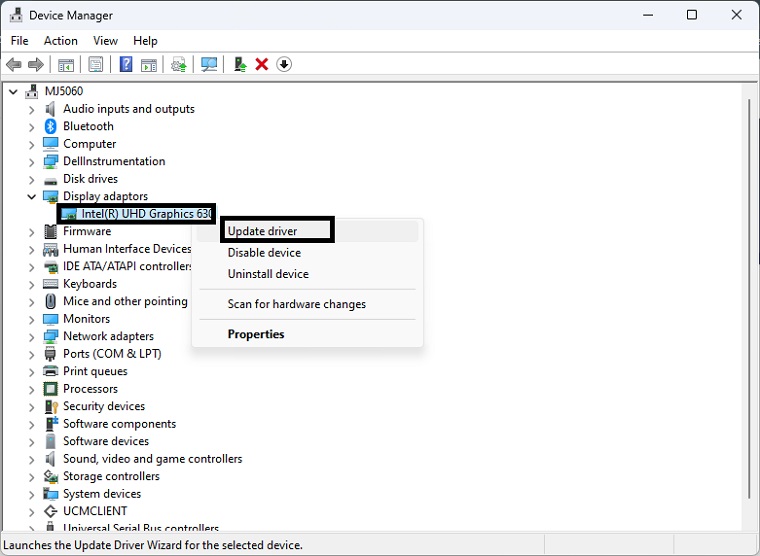
Step 4. Click Search automatically for updated driver software.
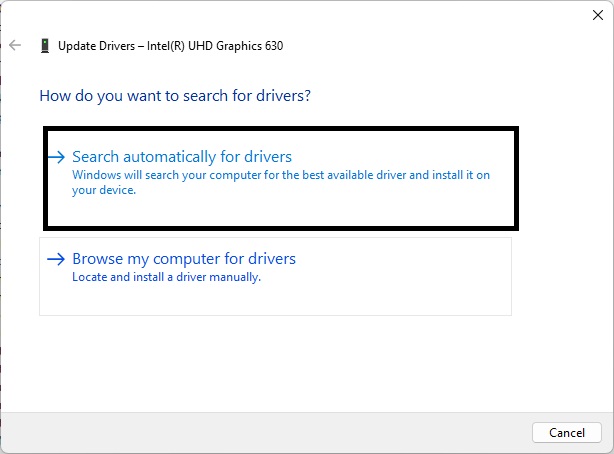
Step 5. Windows will search for an update and download it.
Once done, you can check whether you have fixed the issue.
There is a software that can automaically update your drivers quickly and efficiently called Driver Easy software. Unlike the device manager, it can update all drivers with a single click and has a broader database for detecting the latest drivers.
6. Reinstall your RAM
A poor connection between your RAM and motherboard can also cause this problem. In this case, you need to reinstall your RAM. Here is how:
Step 1: Press and hold the power button until your computer turns off.
Step 2: Disconnect the AC power cord from the power supply, and then open your computer case.
Step 3: On your motherboard, remove your RAM from the memory slot.
Step 4: Put your RAM back into the slot.
Step 5: Connect the AC power cord to the power supply, and then turn on your computer.
If your computer still can’t boot properly, don’t worry. Check the fix below.
7. Check for Faulty Hardware
In case, the PC turns on but there’s no display or power to the keyboard, then faulty RAM modules, a defective graphics card, or a malfunctioning motherboard can also lead to a no-display situation.
Try using different RAM modules or a spare graphics card to isolate the problem. If possible, test your components on another compatible system to determine if they are the cause.
8. Understand LED lights
Many computers have LED lights that indicate the status of the computer. If the LED lights are not lit up, then there may be a problem with the computer. The meaning of the LED lights will vary depending on the computer model.
9. Reset CMOS
Resetting the CMOS (Complementary Metal-Oxide-Semiconductor) can help resolve display issues caused by incorrect BIOS/UEFI settings. Consult your computer or motherboard manual for instructions on resetting the CMOS.
10. Start Your Computer With Essential Hardware Only
The purpose here is to remove as much hardware as possible while still maintaining your PC’s ability to power on.
For example, disconnect peripheral devices that aren’t necessary for your computer to work properly, such as USB-connected storage devices.
11. Contact for Professional Assistance
If you have tried all the above steps and are still unable to resolve the PC turns on but no signal issue, it may be necessary to seek professional assistance. A certified technician can diagnose the problem more accurately and provide a tailored solution for your specific hardware configuration.
How to Protect Your Computer After Fixing the Issue?
Sometimes, Windows fails to load even though the computer screen functions properly. This situation can result in data loss for users. To mitigate this risk, it is crucial to address the issue and take proactive measures to safeguard your data and files. Creating regular system images of your computer is highly recommended to prevent potential data loss hazards.
To ensure data protection on your computer, it is advisable to use reliable backup software i.e. EaseUS Todo Backup Home, and AOMEI Backupper, is recommended solution that fulfills this requirement effectively.
FAQS
1. How to Force Restart PC?
To force restart your PC, you just need to follow the below steps;
- Windows. Method. Hold the power button on your PC for at least 7 seconds, until it turns off.
- Android. Method. Hold the power button for up to 30 seconds.
2. Why is my Computer Black and Not Turning on?
The notorious black screen of death (BSOD) can occur for a variety of reasons including overheating, update issues, a power supply issue, and software or driver errors.
3. How do you Restart a Computer that won’t Restart?
If the usual computer repair restart methods aren’t working, you can force your computer to restart by holding down the power button until it shuts down, then pushing it again to start your machine
4. Can RAM Cause My Display To Go Black?
Yes. Without RAM, your computer can’t function, which means your display will be black when you turn it on. If you think this is the cause of your display problem, try reseating the RAM or installing new ones.
5. Why is the Display Getting No Signal When I Turn on My PC?
When your PC is powered on but the display shows no signal, it can be attributed to several factors. Here are some possible causes:
- Faulty cable connections.
- Incorrect input source.
- Graphics card or onboard video issue.
- Display settings.
- Power supply or hardware problem.







